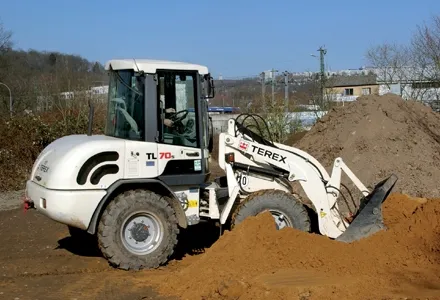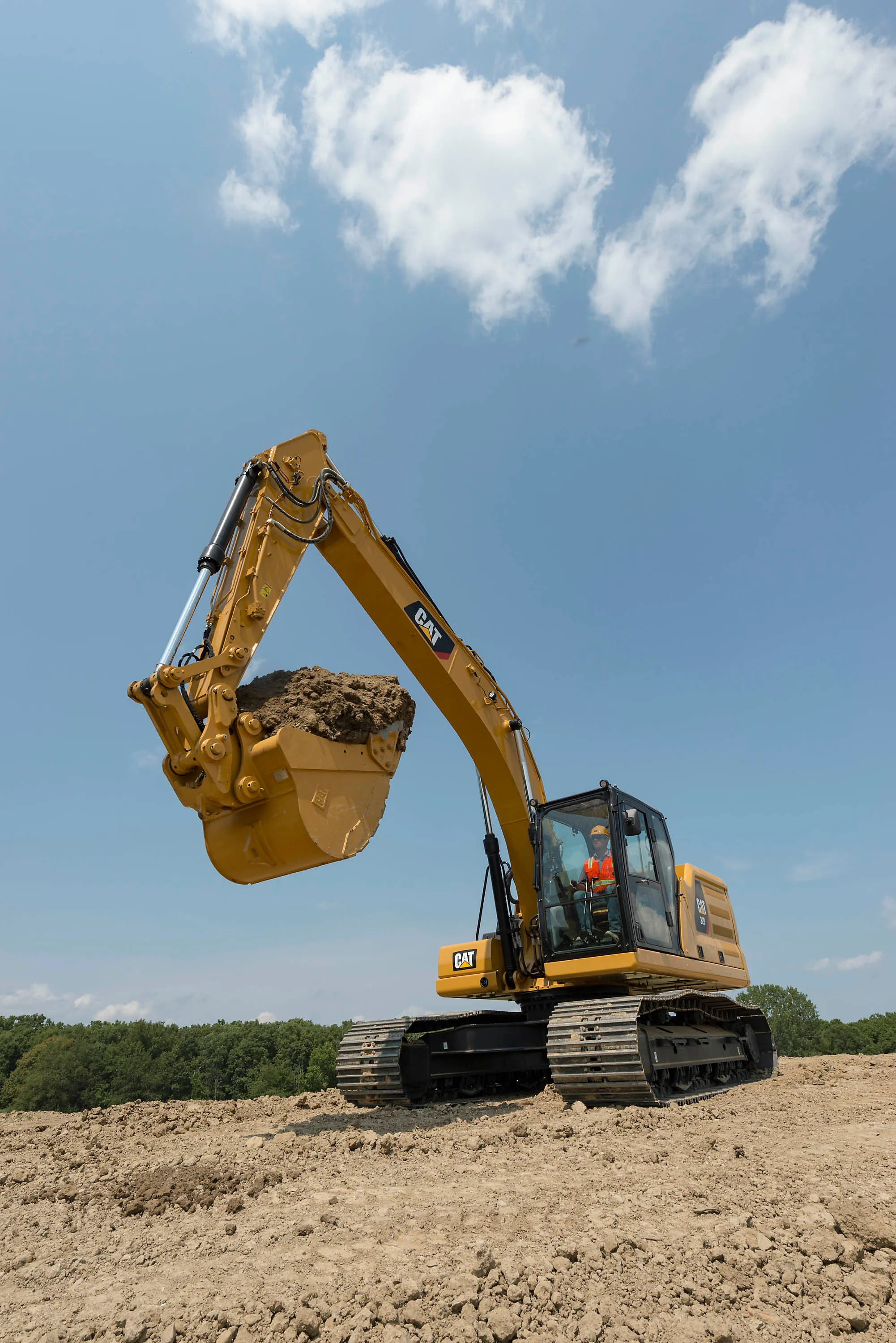A Terex TL70S wheel loader is currently transporting materials for Jablonski and Busch at the 400m long construction site on the Saarbrucken's Osthafen (Eastern Harbour) in Germany, where roads and a canal are being built. Jablonski and Busch requested that the wheel loader be fitted with an all-purpose 0.65m3 multi-function clam bucket so that the machine can work on a variety of levelling work, including sanding, gravel spreading and clearing snow. The loader's hydraulic quick-connect system means that a
July 30, 2012
Read time: 2 mins

A 1222 Terex TL70S wheel loader is currently transporting materials for Jablonski and Busch at the 400m long construction site on the Saarbrucken's Osthafen (Eastern Harbour) in Germany, where roads and a canal are being built.
Jablonski and Busch requested that the wheel loader be fitted with an all-purpose 0.65m3 multi-function clam bucket so that the machine can work on a variety of levelling work, including sanding, gravel spreading and clearing snow.
The loader's hydraulic quick-connect system means that a variety of buckets and fork arms can be fitted easily to the machine. Operators are assured that the rear oscillation will 'freeze' automatically if the swing angle exceeds 45º.
Andreas Neufeld of Jablonski and Busch said: "The handling is simply fantastic when pallets of paving stones or cable drums need to be unloaded and transported." The TL70S is fitted with a limiter that controls lift, lowering and swing, ensuring that the front tyres are not damaged by the loading system.
When stationary, the TL70S can cover a working range of 180º (90º on either side of the direction of travel) with the swung loading system. The operating radius increases to 260º when travelling with swung bucket and articulated. Of this range, 40º to both right and left is contributed by the maintenance-free articulated joint.
Jablonski and Busch requested that the wheel loader be fitted with an all-purpose 0.65m3 multi-function clam bucket so that the machine can work on a variety of levelling work, including sanding, gravel spreading and clearing snow.
The loader's hydraulic quick-connect system means that a variety of buckets and fork arms can be fitted easily to the machine. Operators are assured that the rear oscillation will 'freeze' automatically if the swing angle exceeds 45º.
Andreas Neufeld of Jablonski and Busch said: "The handling is simply fantastic when pallets of paving stones or cable drums need to be unloaded and transported." The TL70S is fitted with a limiter that controls lift, lowering and swing, ensuring that the front tyres are not damaged by the loading system.
When stationary, the TL70S can cover a working range of 180º (90º on either side of the direction of travel) with the swung loading system. The operating radius increases to 260º when travelling with swung bucket and articulated. Of this range, 40º to both right and left is contributed by the maintenance-free articulated joint.








